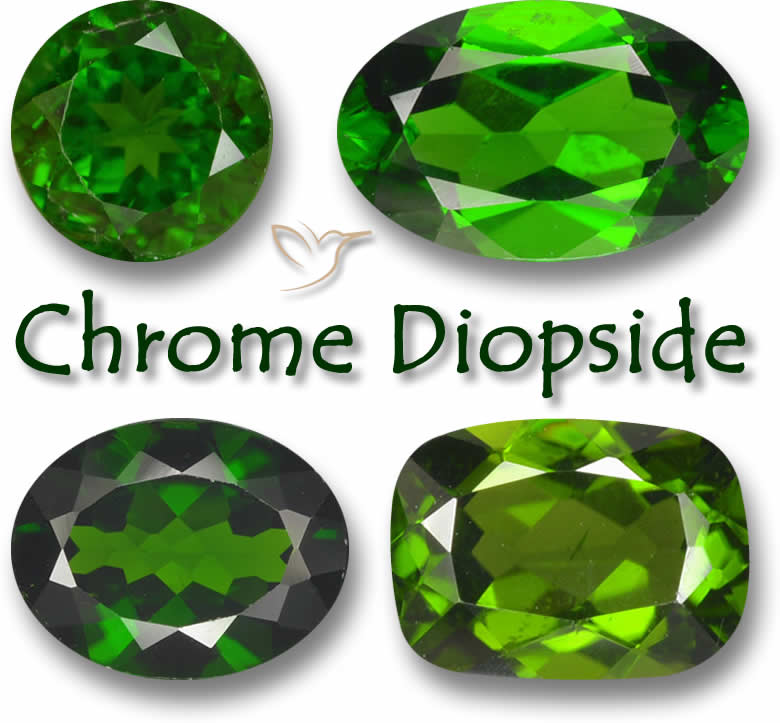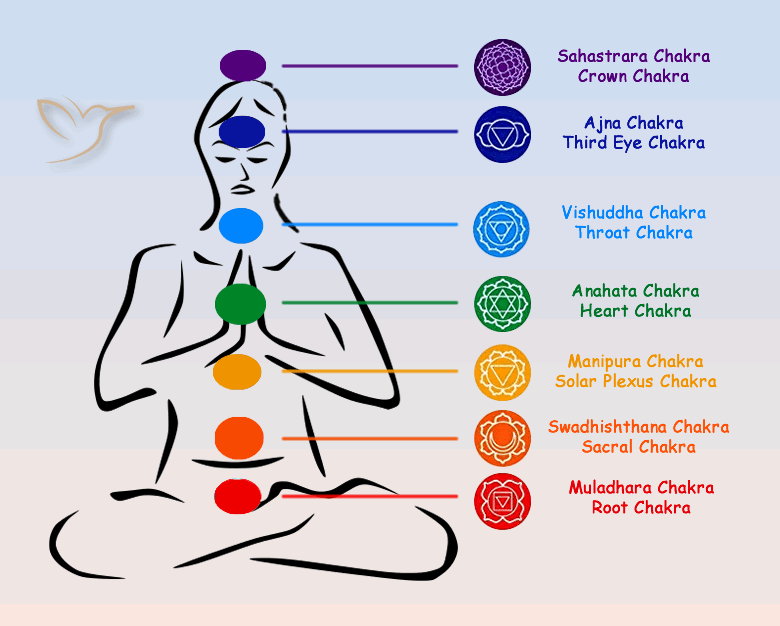Chrome Diopside Gemstone Information

Chrome Diopside Introduction
When you first cast your eyes on one of these gorgeous gemstones, you would easily be forgiven for thinking Tsavorite, Tourmaline, or even Peridot in some cases. But I doubt the words Chrome Diopside would come to mind right away.
The intense forest green or deep olive tones, combined with a fantastic sparkle and clarity that many other green gemstones would envy, make Chrome Diopside worth examining more closely. Maybe it's the somewhat awkward name that's kept it from becoming as popular as it deserves.
Russian Diopside, Imperial Diopside, Russalite, Vertilite, Serbelite, Tashmarine - even the misleading Siberian Emerald - have all been suggested as alternatives, but none stuck. It's known as Chrome Diopside, and as Shakespeare put it, a rose by any other name would smell as sweet. For more insights into its characteristics and appeal, check out our detailed guide on Chrome Diopside properties.
Chrome Diopside Colors

As the name suggests, Chrome Diopside owes its green hue to chromium in its structure - and that's spot on. The shades range from bright grassy green to dark, shadowy forest green that's nearly black.
Many famous and pricier green gemstones have counterparts in Chrome Diopside. Lighter greens resemble Peridot, while the vibrant medium greens match Tsavorite Garnet and Chrome Tourmaline, but at a much lower price. Plenty of Chrome Diopside gemstones rival emerald in color, minus the inclusions and high cost.
Sometimes, Chrome Diopside can seem 'too green,' where deep shades make it look almost black if cut too deeply or in larger sizes. Faceting requires special care to showcase that beautiful green at its finest.
Chrome Diopside Species
Diopside is a calcium and magnesium silicate mineral found worldwide, and with chromium impurities, it becomes the gem known as Chrome Diopside.
There's also Violane, a Diopside with manganese that shows violet to light blue, and Lavrovite with vanadium for green, but both are rare.
A black Diopside with asterism, called Star Diopside, exists too.
Chrome Diopside in the earth's crust often signals nearby diamonds, aiding miners in their searches.
Chrome Diopside Clarity

Typically, Chrome Diopside stones under 2 or 3 carats boast excellent clarity, free of visible flaws or inclusions. Larger ones are rare except in opaque cabochons, Cat's Eyes, or Star Diopside.
Spiritual Meaning of Chrome Diopside
Disclaimer: The information on spiritual meanings, chakra associations, and health benefits is for informational purposes only. It is not a substitute for professional medical advice, diagnosis, or treatment. Always consult your physician or qualified health provider with questions about medical conditions.
Chrome Diopside appeals to nature enthusiasts and those worried about our planet's future. If you're addressing local environmental concerns, this gemstone could be a supportive companion.
It's a compassionate stone that aids in healing from heartbreak or sadness after a breakup, and helps you connect with others' suffering. It encourages mending relationships by prompting reconciliation or forgiveness.
For those caring for children, pets, or elderly loved ones, Chrome Diopside offers strength while reminding you of your own importance.
Chrome Diopside and the Chakras

Chakras are energy centers in the body, known as Qi or Prana. Seven chakras influence physical, emotional, or mental states: Crown, Third Eye, Throat, Heart, Solar Plexus, Sacral, and Root. The term Chakra means 'wheel' in Sanskrit.
Each chakra links to a color, and gemstones with dominant colors connect to corresponding chakras.
When chakras are unbalanced, healing stones can help realign them. These crystals match chakra colors: red for Root, orange for Sacral, yellow for Solar Plexus, green for Heart, blue for Throat, indigo for Third Eye, purple for Crown.
Chrome Diopside resonates with the heart chakra, supporting emotional healing and balance. Its green hue represents growth, renewal, and vitality, aligning with heart energies. It's thought to foster compassion, empathy, love, release blockages, encourage forgiveness, and promote harmony. People use it to strengthen connections and enhance emotional and spiritual well-being.
To unblock your Heart Chakra with Chrome Diopside, meditate holding it in your palm, wear it as a pendant, or place it on your chest while relaxing to let its energy work.
Health Benefits of Chrome Diopside
Physically, Chrome Diopside is said to support heart and lung issues, improve circulation and respiration, regulate blood pressure, detoxify, and aid recovery from heart attacks, smoking damage, or emphysema.
We're not experts, but from experience, wearing gemstones as jewelry is a simple way to benefit. Green Chrome Diopside ties to the heart chakra, so a necklace works well.
Carry them in your pocket as touchstones, use in meditation, or place on chakra points while lying down. Add to baths (if water-safe), or decorate your home - some boost work areas on desks, others relaxation in living rooms.
To cleanse, rinse under running water (ideally a stream, but a tap is fine) while visualizing negatives washing away, then sun-dry for about half an hour.
Chrome Diopside Price

Colored gemstones are priced based on hue, tone, and saturation, and that's key for Chrome Diopside. It spans lime to pine green, evenly colored. Avoid washed-out light or near-black dark shades.
Chrome Diopside Price List |
||
|
Color |
Weight range |
Price range / USD |
|---|---|---|
|
Green |
up to 1ct |
$17 - 40/ct |
|
Green |
1ct - 2ct |
$20 - 60/ct |
|
Green |
2ct + |
$50 - 150/ct |
Clarity matters next. Faceted stones should be clear without visible flaws. Up to 2-3 carats, they should look eye-clean - no inclusions seen from 15cm away.
Larger than a few carats? Tough to find unless translucent or opaque. Smaller ones often show better color and sparkle as light passes through fully.
Cutting Chrome Diopside is challenging due to cleavage planes. Shallow facets lighten color and boost sparkle but waste material - a 5-carat gem needs 50-carat rough. Common shapes: round, oval, cushion to minimize loss.
That waste produces melee - tiny clear stones great for accents or pave in jewelry.
Despite the effort, rarity, and beauty, Chrome Diopside offers great value, rivaling emerald in appearance.
A lush green, untreated, eye-clean, 1.5-carat cushion-cut Chrome Diopside might cost under $50, while a similar Tsavorite could hit $1000. (Comparing gemstones isn't always fair, though.)
Chrome Diopside History and Discovery

Chrome Diopside's story kicked off in 1988 with high-quality green gems found in Siberia's Republic of Sakha - a spot so cold even locals bundle up extra.
Diopside was noted two centuries earlier by Brazilian mineralogist Jose Bonifacio, found globally. A variety called Black Star of India, deep green with a white star, has been known for ages.
The Siberian find timed with the Soviet Union's dissolution, and soon European dealers eagerly bought these emerald-, tsavorite-, and tourmaline-like gems. It's been gaining ground ever since.
Where is Chrome Diopside Found?
In 1988, as the Soviet Union started unraveling, deep green, clear gems trickled West - this was early Russian Chrome Diopside. Siberia's opening brought more supply.
Sakha is tough terrain but rich in resources like oil, gold, diamonds. It also yields beautiful gems: Chrome Diopside, Amethyst, Charoite, Turquoise, Jade. Most gem-quality Chrome Diopside comes from this frigid region.
Mines close half the year from snow; roads and rivers freeze. Alternatives would help, but equivalents from Pakistan, Afghanistan, Myanmar, Madagascar are limited. India supplies most Star Diopside.

How is Chrome Diopside Formed?

Diopside forms when magma rises and contacts sedimentary rocks, melting them into new formations with mixed minerals.
As it cools, crystals grow in gas-created cracks; chromium impurities yield green Chrome Diopside.
Can Chrome Diopside be Treated?
Chrome Diopside usually only undergoes standard cutting, faceting, and polishing - no other treatments.
At GemSelect, we disclose any treatments on our gemstones.
What Jewelry is Chrome Diopside Suitable For?
Chrome Diopside looks stunning in various green shades, but its Mohs hardness of 5-6 means it's somewhat soft.
That's fine for earrings, necklaces, pendants, but riskier for bracelets or rings that see more wear.
How to Care for Chrome Diopside
Being softer, Chrome Diopside needs extra attention when worn, cleaned, or stored. Remove jewelry for physical tasks like cleaning, sports, or gardening.
Clean with warm soapy water and a soft cloth. Store separately from other gems, wrapped in cloth or in lined boxes.
How to Tell a Real Chrome Diopside

A certified gem from a trusted dealer is ideal, but not always feasible online.
Chrome Diopside isn't pricey, so fakes are rare. But its resemblance to Emerald, Tsavorite, Tourmaline means it could substitute or counterfeit. It's softer than those - quick clue.
At GemSelect, we offer reports from AIG, ICA GemLab, or BGL Lab.
Can Chrome Diopside Change Color?

Some gems shift color dramatically under lights - like garnet red indoors, green outside. Chrome Diopside doesn't do that.
What is So Special About Chrome Diopside?
What strikes you first with Chrome Diopside is the rich green and sparkle - outshining rivals. It seems high-end and costly, but while quality is top-notch, price is far below Tsavorite, Tourmaline, or Emerald.
The name sounds industrial, like car polish, but we'll stick with it unless a trade name catches on. It derives from chromium for color, and 'dis opse' meaning two-faced for prism alignment (not thrilling, but factual).
Only on the market 30+ years, as supplies stabilize, designers may embrace it more. A affordable, gorgeous green gem like this deserves attention - Chrome Diopside has earned its place.
Frequently Asked Questions
What colors does Chrome Diopside come in?
Chrome Diopside ranges from bright grassy green to dark forest green, often matching shades of Peridot, Tsavorite, or Emerald.
Is Chrome Diopside rare?
High-quality Chrome Diopside is somewhat rare, mainly sourced from Siberia, with limited alternatives from other regions.
How hard is Chrome Diopside?
It rates 5 to 6 on the Mohs scale, making it suitable for jewelry but requiring care to avoid scratches.
Does Chrome Diopside have any special properties?
Beyond its beauty, it's linked to environmental awareness and emotional healing in spiritual contexts, though these are not scientifically proven.
Where can I buy Chrome Diopside?
Reputable online dealers like GemSelect offer certified Chrome Diopside gemstones. Explore our selection of loose Chrome Diopside for sale.
Chrome Diopside - Gemological Properties
|
Chemical Formula: |
CaMgSi2O6, Calcium magnesium silicate |
|
Crystal Structure: |
Monoclinic; columnar crystals |
|
Color: |
Green, yellow, colorless, brown, black |
|
Hardness: |
5 to 6 on the Mohs scale |
|
Refractive Index: |
1.664 - 1.730 |
|
Density: |
3.22 to 3.38 |
|
Cleavage: |
Good |
|
Transparency: |
Transparent, translucent |
|
Double Refraction or Birefringence: |
0.024 to 0.031 |
|
Luster: |
Vitreous to dull |
|
Fluorescence: |
Violet, orange, yellow, green |

